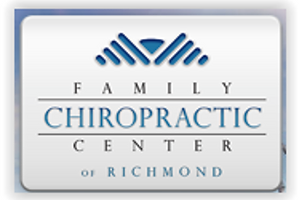Back Pain Facts & Statistics
- Dr. Eric Carlsen
- Aug 30, 2022
- 5 min read

Although doctors of chiropractic treat more than just back pain, many patients initially visit a chiropractor looking for relief from this pervasive condition. In fact, about 31 million Americans experience low back pain at any given time.1
Interesting Facts about Back Pain
Worldwide, back pain is the single leading cause of disability, preventing many people from engaging in work as well as other everyday activities.2
Back pain is one of the most common reasons for missed work. One-half of all working Americans admit to having back pain symptoms each year.3
Back pain accounts for more than 264 million lost work days in one year—that’s two work days for every full-time worker in the country.4
Experts estimate that up to 80% of the population will experience back pain at some time in their lives.5
Back pain can affect people of all ages, from adolescents to the elderly.5
Back pain is the third most common reason for visits to the doctor’s office, behind skin disorders and osteoarthritis/joint disorders.6
Most cases of back pain are mechanical or non-organic—meaning they are not caused by serious conditions, such as inflammatory arthritis, infection, fracture, or cancer.7
Most people with low back pain recover, however recurrence is common and for a small percentage of people, the condition will become chronic and disabling.7
Worldwide, years lived with disability caused by low back pain have increased by 54% between 1990 and 2015.7
Low back pain costs Americans at least $50 billion in health care costs each year8—add in lost wages and decreased productivity and that figure easily rises to more than $100 billion.9
What Causes Back Pain?
The back is a complicated structure of bones, joints, ligaments, and muscles. You can sprain ligaments, strain muscles, rupture disks, and irritate joints, all of which can lead to back pain. While sports injuries or accidents can cause back pain, sometimes the simplest of movements—for example, picking up a pencil from the floor— can have painful results. In addition, arthritis, poor posture, obesity, and psychological stress can cause or complicate back pain. Back pain can also directly result from diseases of the internal organs, such as kidney stones, kidney infections, blood clots, or bone loss.
Research Supports Chiropractic Spinal Manipulation
With today’s growing emphasis on quality care, clinical outcomes, and cost-effectiveness, spinal manipulation is receiving increased attention. The epidemic of prescription opioid overuse and abuse has also led to the wider acknowledgment of the benefits of non-drug approaches to pain.
Spinal manipulation is a safe and effective non-drug spine pain treatment. It reduces pain (decreasing the need for medication in many cases), rapidly advances physical therapy, and requires very few passive forms of treatment, such as bed rest.10
A growing body of research supports spinal manipulation:
After an extensive study of all available care for low back problems, the federal Agency for Health Care Policy and Research (now the Agency for Health Care Research and Quality) recommended that low back pain sufferers choose the most conservative care first. It recommended spinal manipulation as the only safe and effective, non-drug form of initial professional treatment for acute low back problems in adults.11
A well-respected review of the evidence in the Annals of Internal Medicine pointed to chiropractic care as one of the major non-drug therapies considered effective for acute and chronic low back pain.12
According to an article in the medical journal Spine, there is strong evidence that spinal manipulation for back pain is just as effective as a combination of medical care and exercise, and there is moderate evidence that it is just as effective as prescription NSAIDS combined with exercise.13
An article in the Journal of the American Medical Association (JAMA) suggested chiropractic care as an option for people suffering from low back pain–and noted that surgery is usually not needed and should only be tried if other therapies fail.14
More recently, the results of a clinical trial published in JAMA Network Open showed that chiropractic care combined with usual medical care for low back pain provides greater pain relief and a greater reduction in disability than medical care alone. The study, which featured 750 active-duty members of the military, is one of the largest comparative effectiveness trials between usual medical care and chiropractic care ever conducted.15
Back Pain and the Opioid Epidemic
The opioid epidemic has led many respected health groups to reconsider the value of a conservative approach to low back pain (the most common condition for which opioids are prescribed). Most notably, the American College of Physicians (ACP), the largest medical-specialty society in the world, updated its low back pain treatment guideline in 2017 to support a conservative approach to care.
Published in the Annals of Internal Medicine and based on a review of randomized controlled trials and observational studies, the ACP guideline cites heat therapy, massage, acupuncture, and spinal manipulation as noninvasive, non-drug options for low back pain treatment. The guideline further states that only when such treatments provide little or no relief should patients move on to medicines such as ibuprofen or muscle relaxants, which research indicates have limited pain-relief effects. According to ACP, prescription opioids should be a last resort for those suffering from low back pain, as the risk of addiction and overdose may outweigh the benefits.
Tips to Prevent Back Pain
There are several simple strategies that can help to prevent the onset of back pain. Among them:
Maintain a healthy diet and weight.
Remain active—under the supervision of your chiropractor.
Avoid prolonged inactivity or bed rest.
Warm up or stretch before exercising or physical activities, such as gardening.
Maintain proper posture.
Wear comfortable, low-heeled shoes.
Sleep on a mattress of medium firmness to minimize any curve in your spine.
When lifting an object, lift with your knees, keep the object close to your body, and do not twist.
Quit smoking. Smoking impairs blood flow, resulting in oxygen and nutrient deprivation to spinal tissues.
Work with your chiropractor to ensure that your workstation is ergonomically correct.
Credit: American Chiropractic Association
References:
Jensen M, Brant-Zawadzki M, Obuchowski N, et al. Magnetic Resonance Imaging of the Lumbar Spine in People Without Back Pain. N Engl J Med 1994; 331: 69-116.
Hoy D, March L, Brooks P, et al The global burden of low back pain: estimates from the Global Burden of Disease 2010 study Annals of the Rheumatic Diseases Published Online First: 24 March 2014. doi: 10.1136/annrheumdis-2013-204428
Vallfors B. Acute, Subacute and Chronic Low Back Pain: Clinical Symptoms, Absenteeism and Working Environment. Scan J Rehab Med Suppl 1985; 11: 1-98.
The Hidden Impact of Musculoskeletal Disorders on Americans, United State Bone and Joint Initiative, 2018.
Rubin Dl. Epidemiology and Risk Factors for Spine Pain. Neurol Clin. 2007; May;25(2):353-71.
Sauver, JL et al. Why patients visit their doctors: Assessing the most prevalent conditions in a defined American population. Mayo Clinic Proceedings, Volume 88, Issue 1, 56–67.
Hartvigsen J et al. Low Back Pain Series: What Low Back Pain Is and Why We Need to Pay Attention. Lancet, June 2018; Volume 391, Issue 10137; p2356-2367.
In Project Briefs: Back Pain Patient Outcomes Assessment Team (BOAT). In MEDTEP Update, Vol. 1 Issue 1, Agency for Health Care Policy and Research, Rockville, MD.
Katz JN. Lumbar disc disorders and low-back pain: socioeconomic factors and consequences [review]. J Bone Joint Surg Am. 2006;88(suppl 2): 21-24.
Time to recognize value of chiropractic care? Science and patient satisfaction surveys cite usefulness of spinal manipulation. Orthopedics Today 2003 Feb; 23(2):14-15.
Bigos S, Bowyer O, Braen G, et al. Acute Low Back Problems in Adults. Clinical Practice Guideline No.14. AHCPR Publication No. 95-0642. Rockville, MD: Agency for Health Care Policy and Research, Public Health Service, U.S. Department of Health and Human Services, December, 1994.
Chou R, Hoyt Huffman LH. Nonpharmacologic therapies for acute and chronic low back pain: a review of the evidence for an American Pain Society/American College of Physicians Clinical Practice Guideline. Ann of Internal Med 2 Oct. 2007;147(7):492-504.
Bronfort G, Haas M, Evans R, et al. Evidence-informed management of chronic low back pain with spinal manipulation and mobilization. Spine. 2008;8(1)213-225.
Goodman D, Burke A, Livingston E. Low Back Pain. JAMA. 2013; 309(16):1738.
Goertz C et al. Effect of Usual Medical Care Plus Chiropractic Care vs. Usual Medical Care Alone on Pain and Disability Among U.S. Service Members With Low Back Pain: A Comparative Effectiveness Clinical Trial. JAMA Network Open




Comments